Highgate Cemetery stands on Highgate hill, with a commanding a view over London. Because of that, it became the place to be buried in Victorian times.
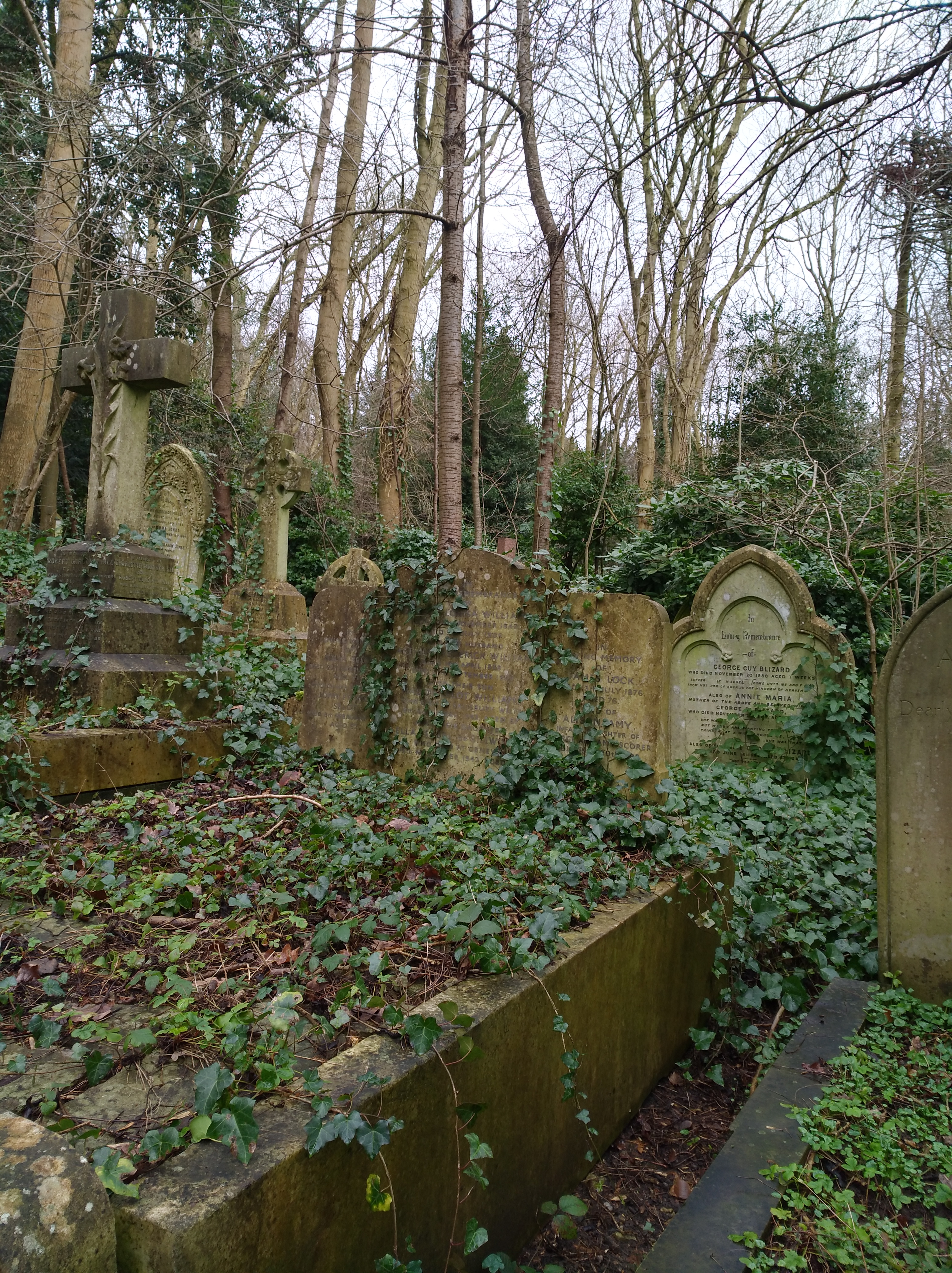 Highgate is one of seven cemeteries opened in the 1800s to relieve pressure on the horrendously overcrowded inner city church graveyards. They’d been overwhelmed by new inhabitants brought into the capital by the industrial revolution. But the Victorians weren’t high on Government interference. So the new cemeteries were all run by private companies and needed to make a profit.
Highgate is one of seven cemeteries opened in the 1800s to relieve pressure on the horrendously overcrowded inner city church graveyards. They’d been overwhelmed by new inhabitants brought into the capital by the industrial revolution. But the Victorians weren’t high on Government interference. So the new cemeteries were all run by private companies and needed to make a profit.
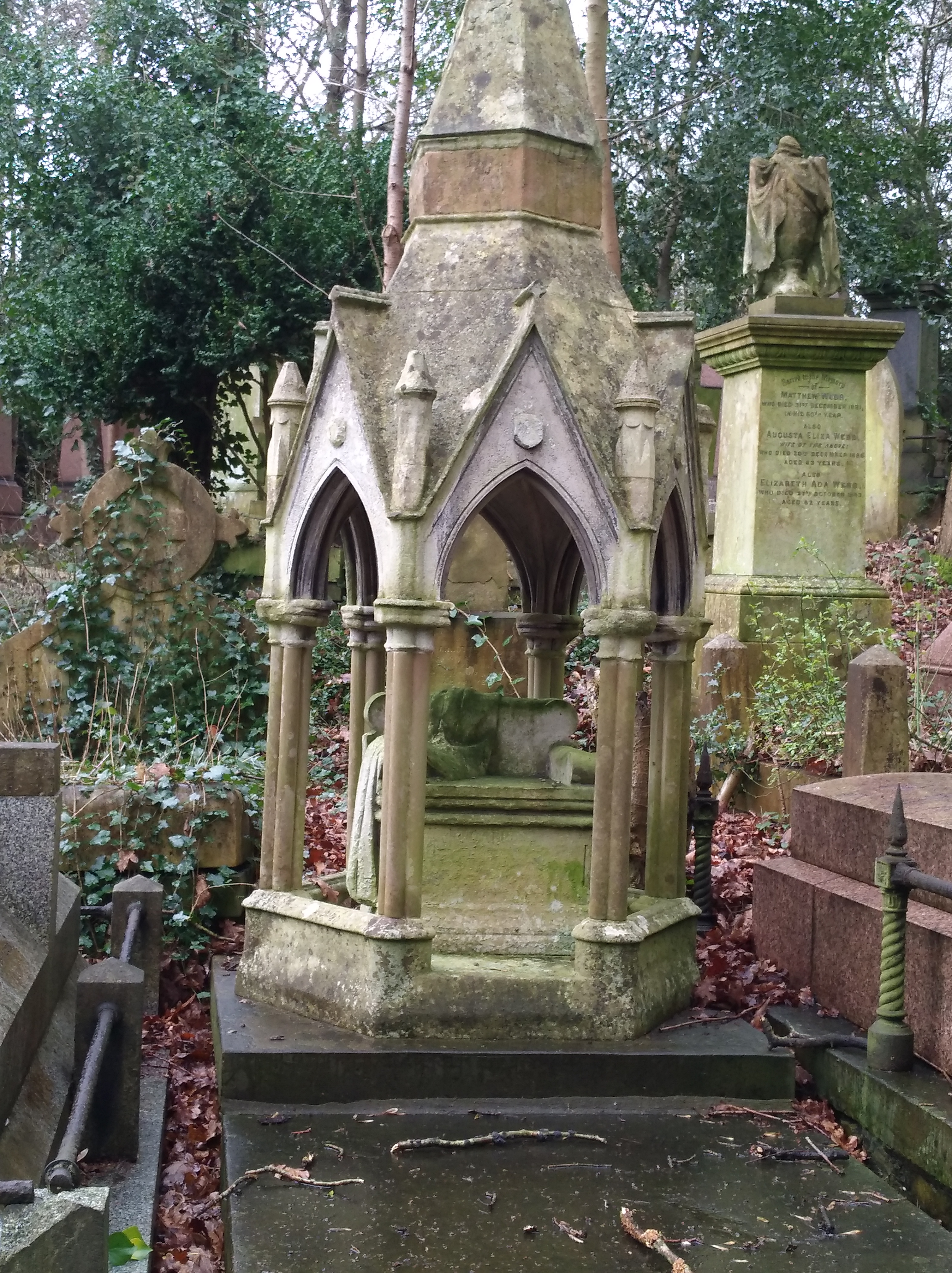
A couple of years ago I visited Highgates’ East Cemetery, so it was only a matter of time before I also made my way to the West. I love a good cemetery. It sounds morbid and part of the appeal is the Gothic nature of them. But I also like history and of course, the hidden story behind each resident. If you’re a writer, they’re good places to find inspiration.
Unlike the Highgate East, where you can wander as you wish, visits to the West are by tour only.
The £12.50 cost is reasonable, especially as the money goes towards the upkeep of the site. It does mean you can’t track down the graves of people you might be interested in, but you do get a boatload of intriguing information from an enthusiastic guide.
The main thing I learnt about is the amount of symbolism in Victorian graves. Urns represent the soul, wreaths mean victory over death, Pelicans are a symbol of piety – nothing on a Victorian burial monument is there just to look pretty. It all means something.
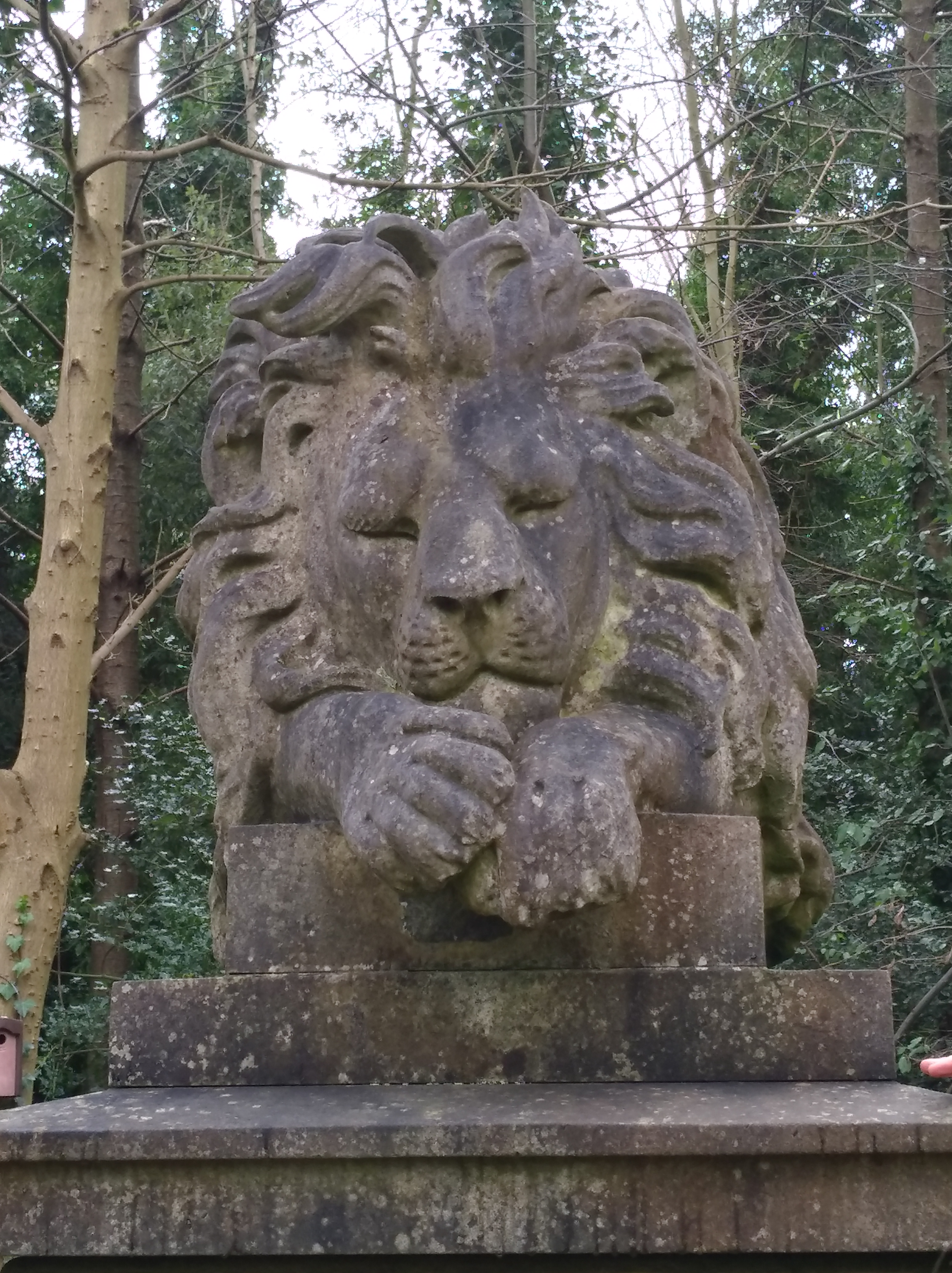
George Wombwell’s lion
Our guide also introduced us to some of the cemeteries more interesting inhabitants.
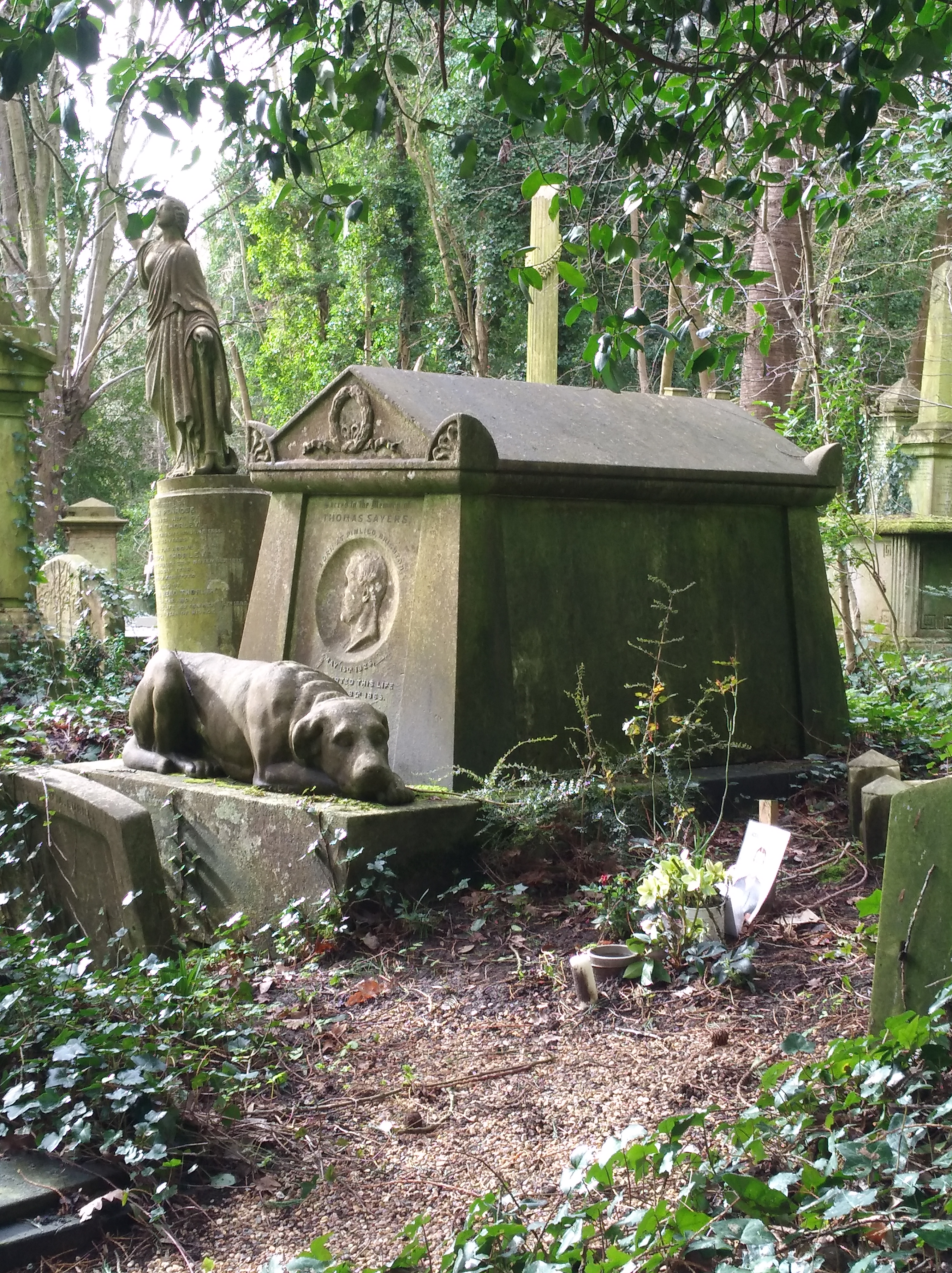
Bare-knuckle boxer Tom Sayers and dog, Lion
George Wombwell, a successful menagerist and his sleepy lion, and Tom Sayers, a successful bare-knuckle boxer and his faithful dog, Lion.
And as far as writers go, we did get a glimpse of the tomb of Radclyffe Hall, author of early lesbian novel ‘The Well of Loneliness’.
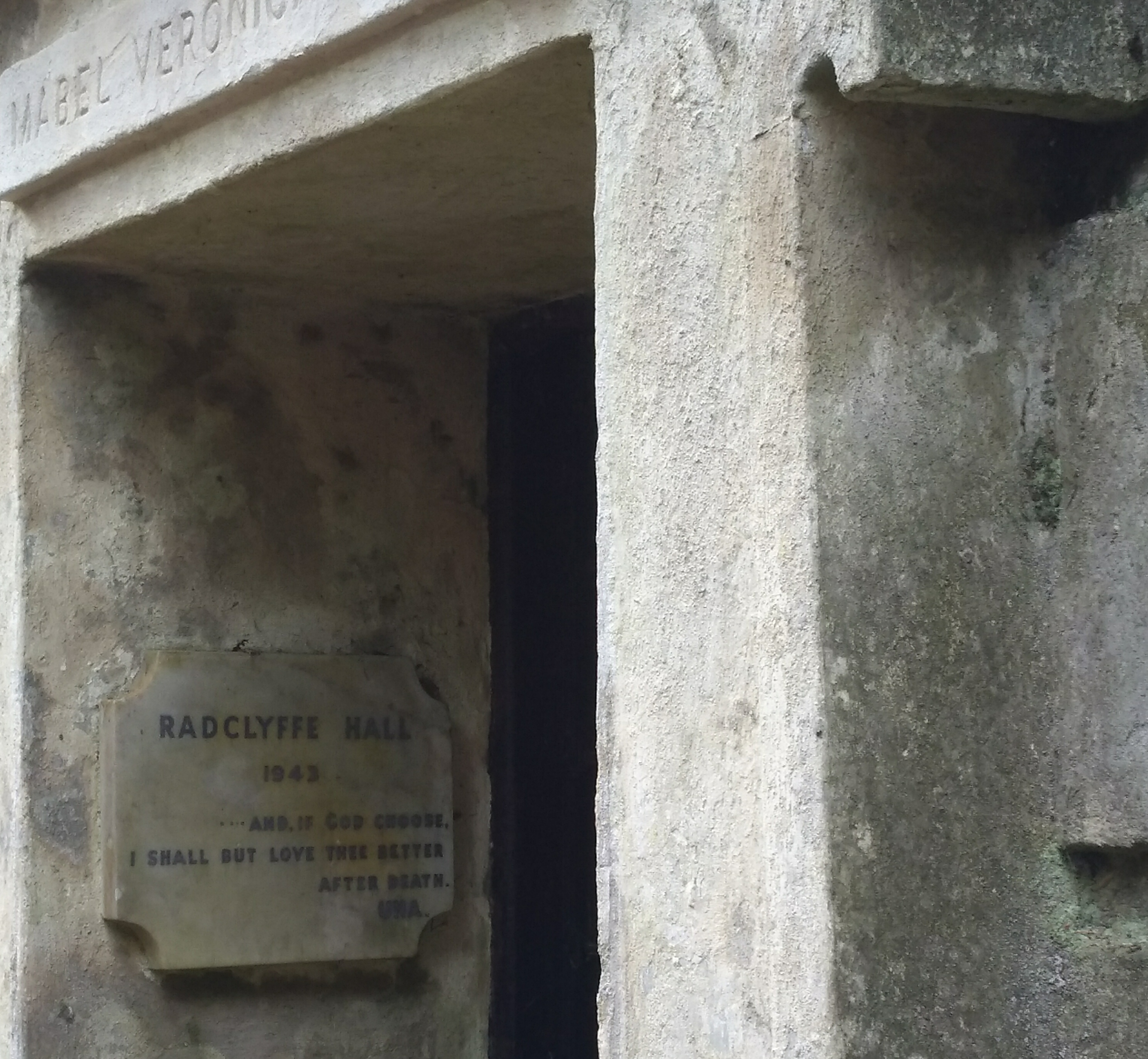
Radclyffe Hall’s tomb
The West side of the cemetery was always the poshest , positioned right at the top of the hill. There were places for the poorest yes, but these were simply a pit you shared with many others and had no gravestone. At the other end of the scale is the most expensive tomb in the place built by Julius Beer for his daughter Ada, at a cost of thousands.
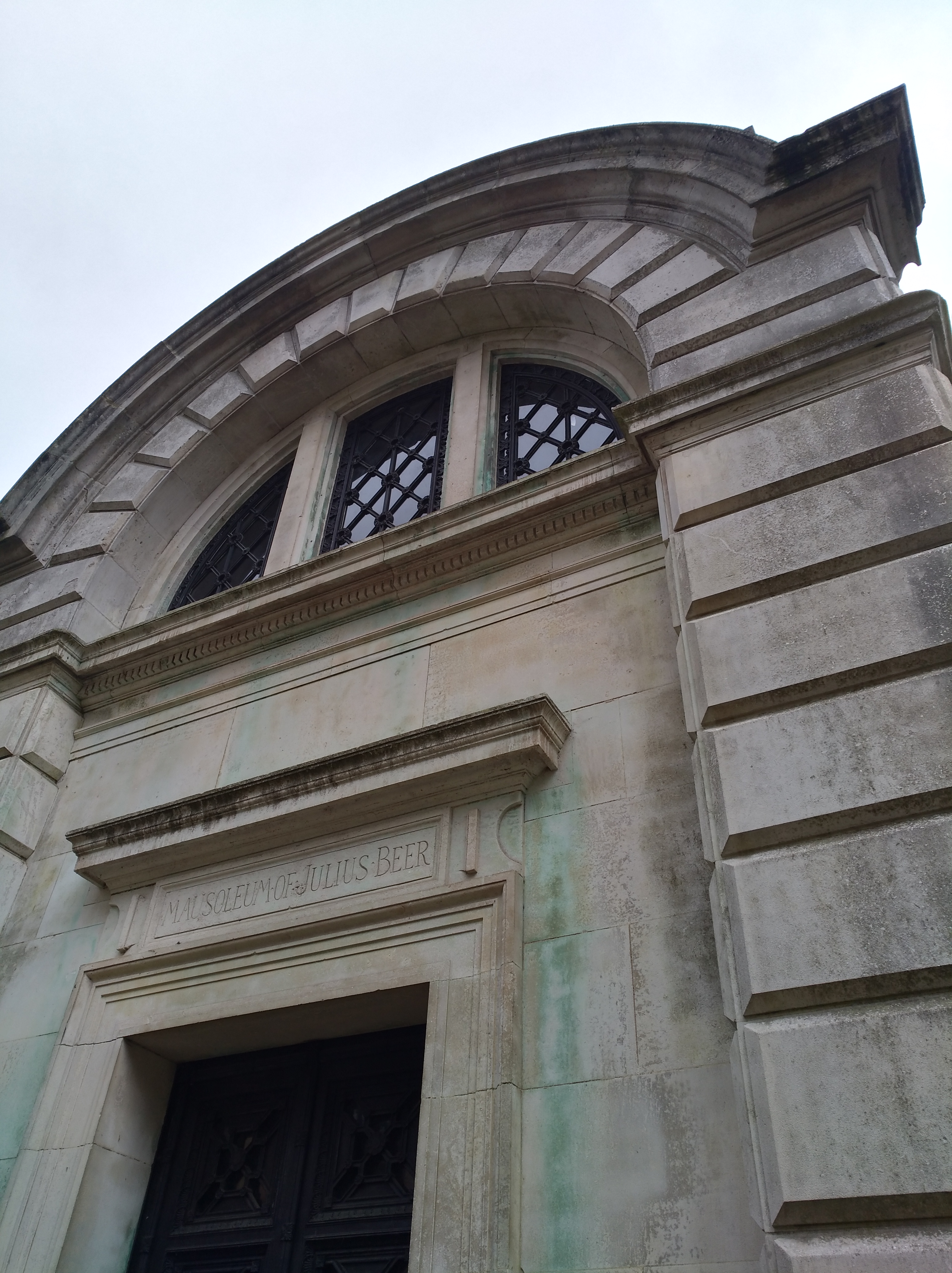
The cemetery still has cache to it. When we visited, there was much ado about where George Micheal would be buried (his mother is interred in a private location in the cemetery). But there’s no mistaking that years of neglect have taken their toll.
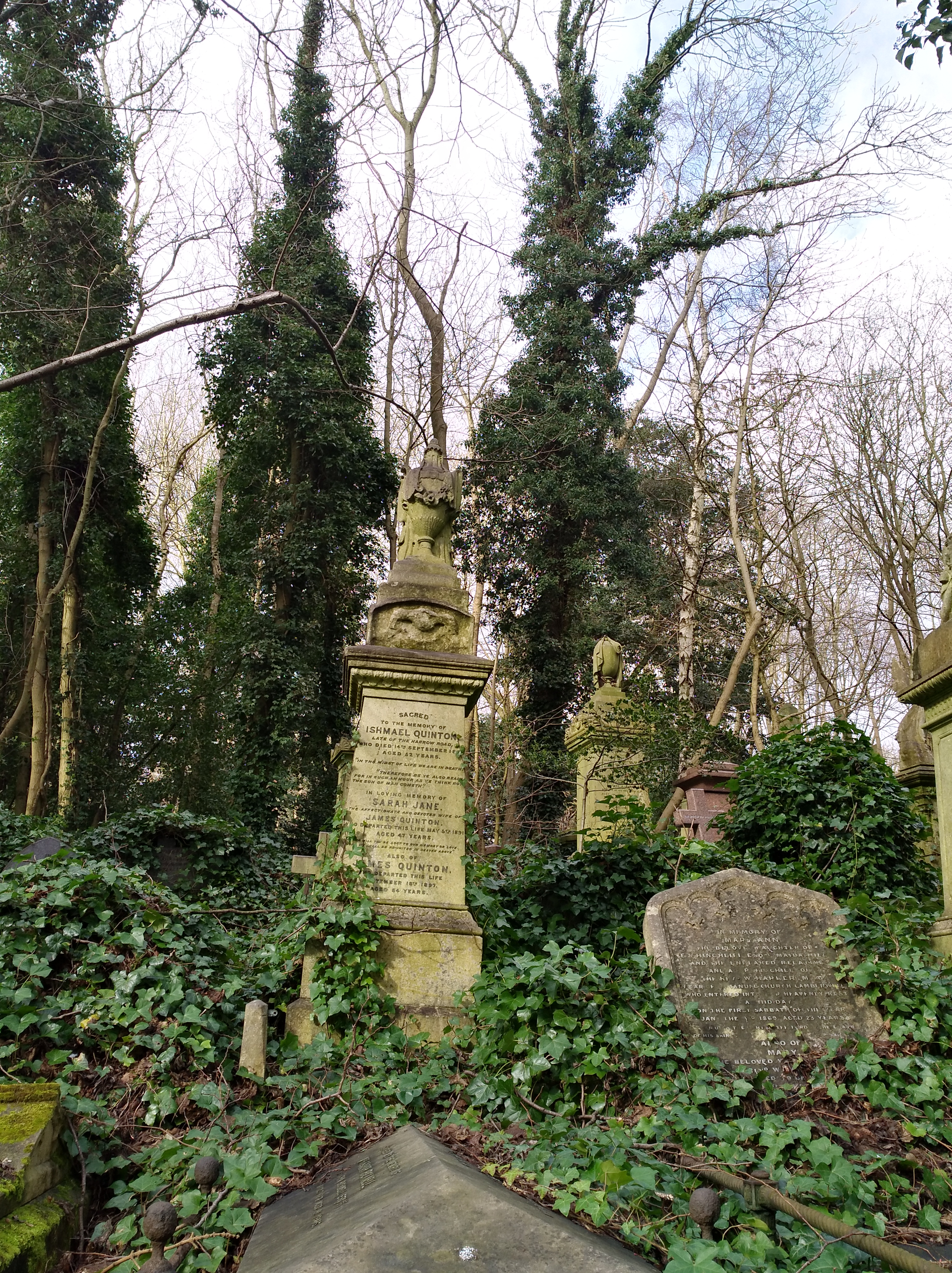
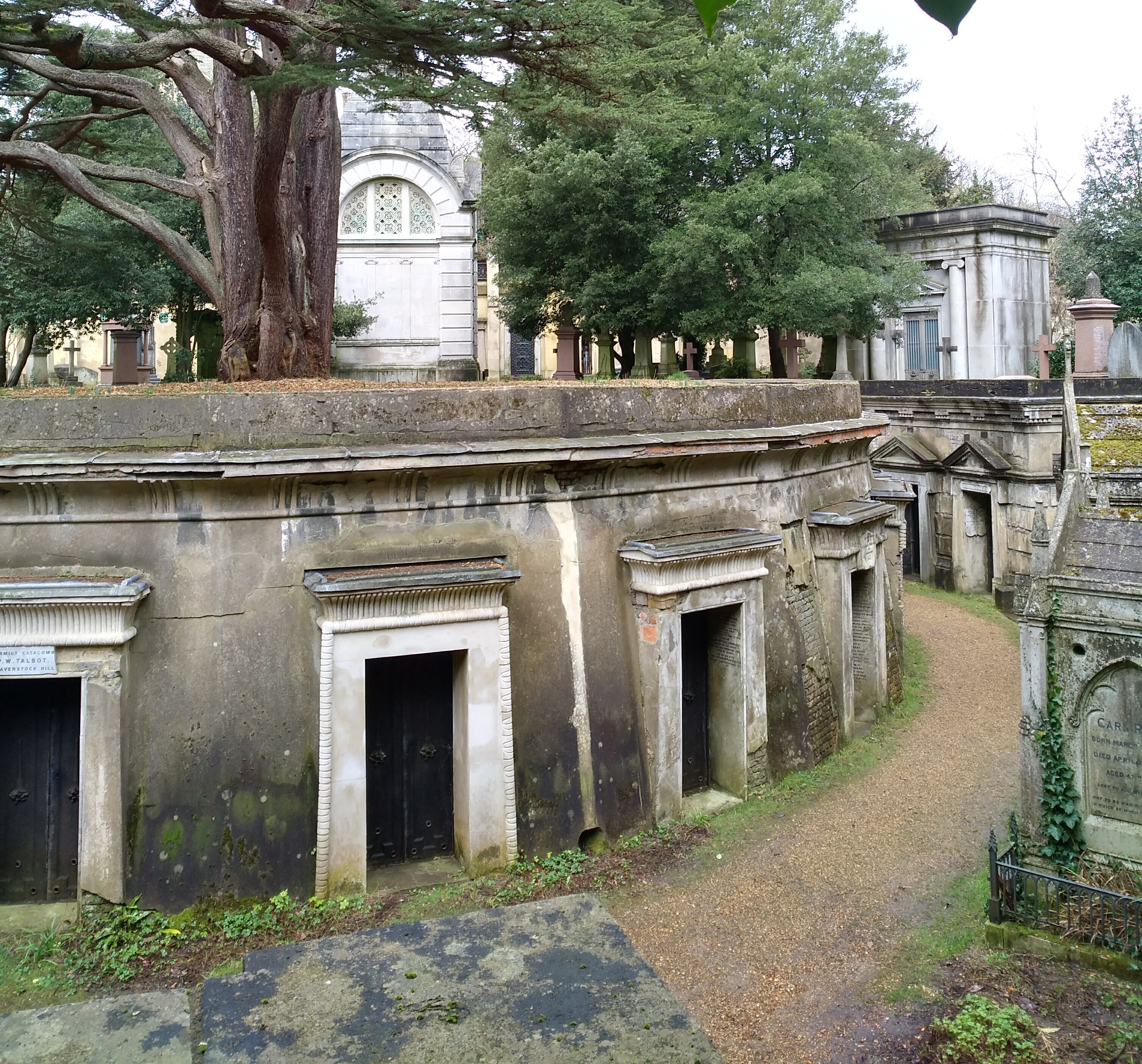
The Circle of Lebanon
Highgate has been restored in parts but it’s still very overgrown. One of the titbits given by our guide was that the graves are leased not owned. Technically it’s the responsibility of the deceaseds relatives to maintain them. If this isn’t done, the grave would be forfit. But this isn’t enforced at the moment and , as you can imagine, many have been forgotten. It does make you wonder if one of your own relatives might be nestled around there somewhere!
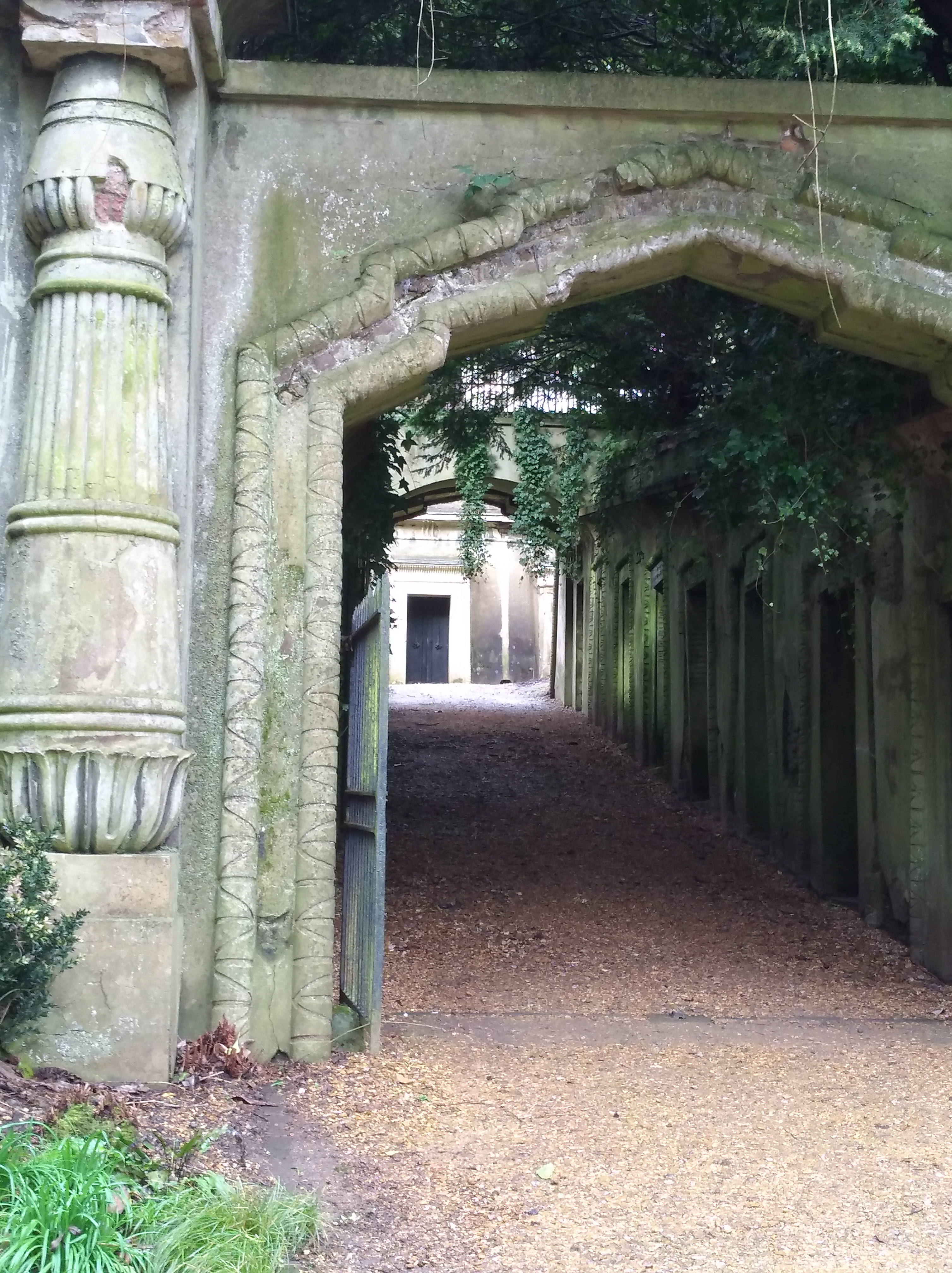
The Egyptian Avenue
For me and many others though, the decrepit nature of the place just adds to the atmosphere. If you’re into Victorian history, graveyards, architecture, London or just after a fascinating tour this could be for you. Quick tip – if you go at the weekends, you don’t have to book but the tours are popular. We went on a cold Sunday morning in February and the tour filled up quickly.
Have you ever visited Highgate? Or another cemetery that’s captured your imagination?

8 Pingbacks